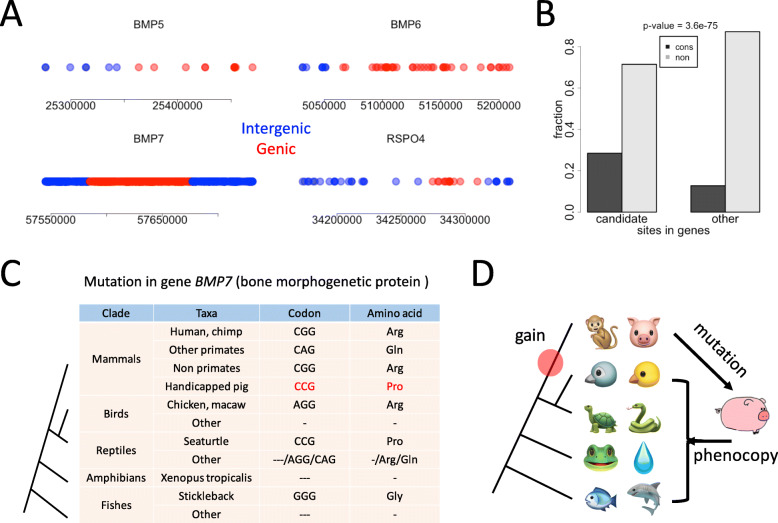Fig. 5.
Candidate genes relevant to hindlimb development on chromosomes 7 and 17. (A) The distribution of H-specific variations on or near the candidate genes. Red dots represented variations in gene regions and blue dots represented variations in intergenic regions. (B) The fractions of conserved nucleotides of the variation sites on the candidate or non-candidate genes. If the reference sequence of pig was identical to the orthologous nucleotide in human, then this position is denoted as conserved. (C) An H-specific missense mutation in gene BMP7 (bone morphogenetic protein), leading to an arginine (CGG) to proline (CCG) change in handicapped pig. This position was relatively conserved in mammals but was variable in birds, reptiles, amphibians, and fishes. (D) Putative evolutionary trajectory of the candidate gene controlling hindlimb development. This trait might be obtained in the common ancestor of mammals. A mutation in this gene lead to the phenotype of the handicapped pig. The clipart images are made by ourselves

